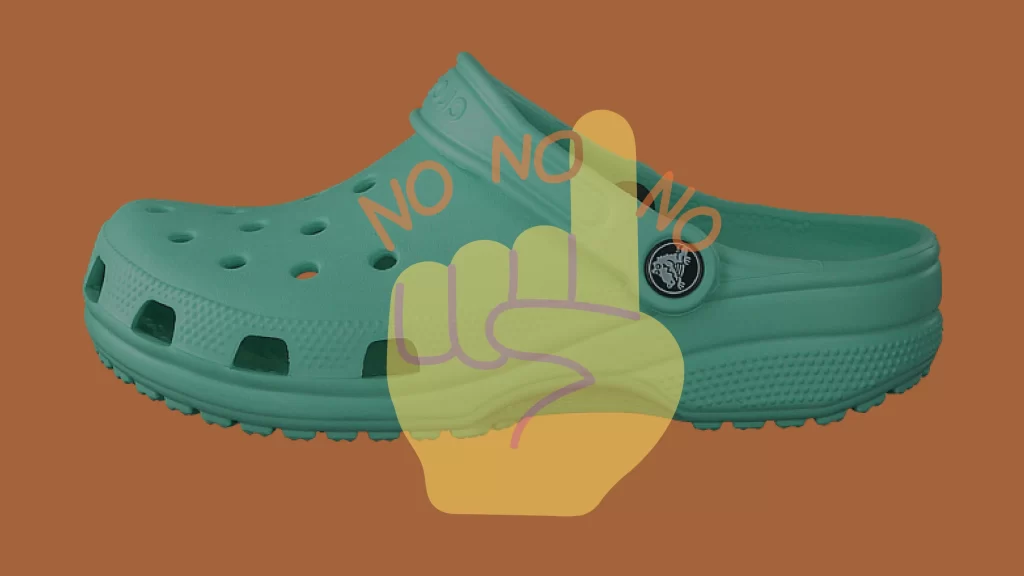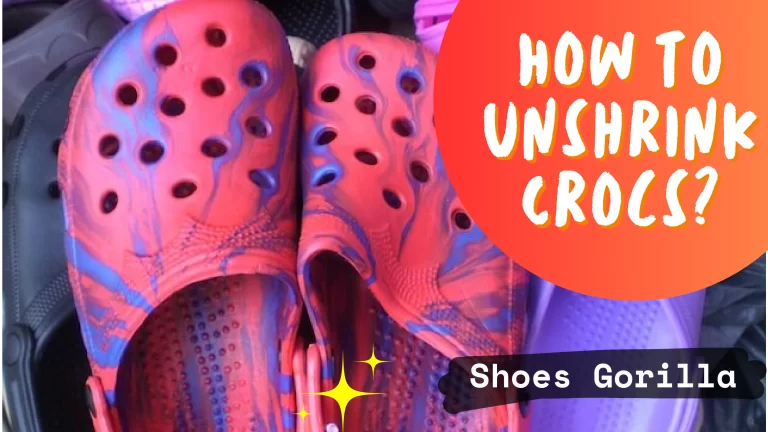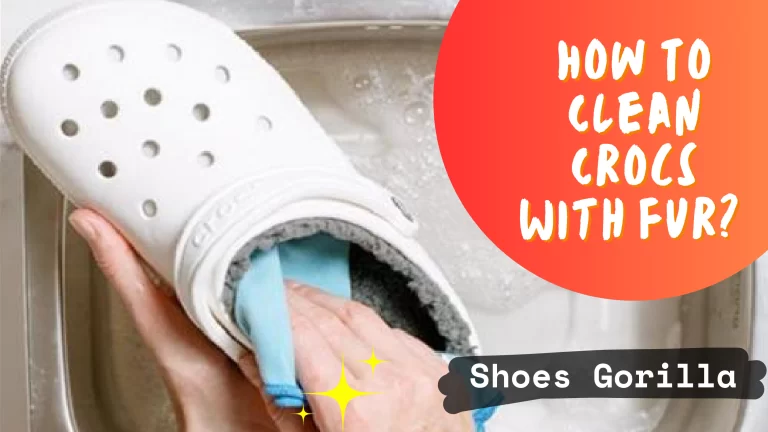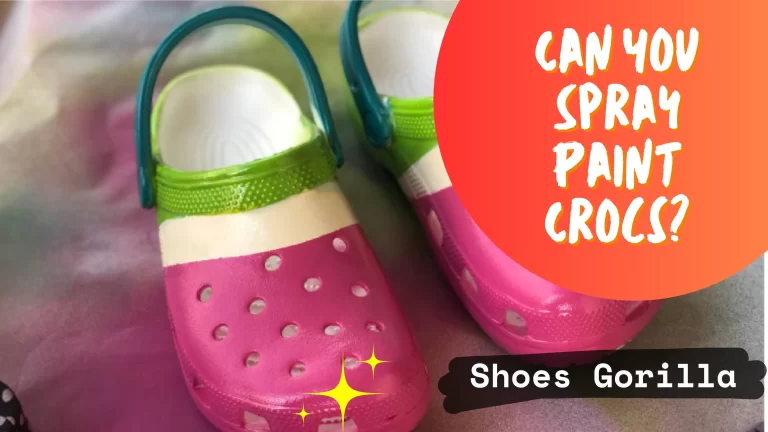Are Crocs Edible?
As a shoe expert, I can confidently say that Crocs has been debated for years. While they are known for their comfort and durability, one question has been on everyone’s mind: Are Crocs edible?
The answer is no; Crocs are not edible. Despite that, there have been reports of people attempting to eat them. In fact, according to a survey, 1 in 4 people have admitted to tasting their Crocs.
So, if you’re wondering whether you can eat your Crocs, the answer is a resounding no. Keep reading to find out more about the science behind why Crocs are not edible.
What are Crocs Made of?
Crocs are made of a proprietary material called Croslite, a type of closed-cell resin. Croslite is primarily composed of polyethylene vinyl acetate (PEVA), a type of polymer made up of repeating molecules.
This material is known for its lightweight, cushioning properties, making it ideal for footwear use. In addition to Croslite, Crocs may contain other materials such as rubber and foam.
While Croslite is recyclable, the plastic and rubber composition of Crocs is not biodegradable, which means that they can harm the environment if not disposed of properly. Despite this, Crocs have remained popular for comfortable and durable footwear.
Are Crocs Edible?
Now that you have learned about the composition material of the Crocs, you might be wondering whether these fantastic shoes are edible. The answer to this question is No, Crocs are not edible.
Despite being made of organic materials, they are not intended for consumption and can cause harm if ingested. While there have been reports of people attempting to eat Crocs, it is not recommended as they are not a source of nutrition and can pose a choking hazard.
It is important to use Crocs for their intended purpose as comfortable and durable footwear and not as a food source.
What is the Chemistry The Chemistry Behind Crocs?
The Chemistry Behind Crocs can be explained by their chemical composition. Crocs are primarily made of Croslite, a proprietary closed-cell resin material containing polyethylene vinyl acetate (PEVA) polymers.
This material is known for its lightweight and cushioning properties, making it ideal for footwear use. In addition to Croslite, Crocs may contain other materials such as rubber and foam.
When Crocs are exposed to heat, they can become deformed and lose shape. The Croslite material softens at high temperatures, making it susceptible to warping and changing shape.
It is, therefore, important to avoid leaving Crocs in direct sunlight or hot environments for extended periods.
As for the effects of digestive enzymes on Crocs, it is important to note that Crocs are not intended for consumption and can cause harm if ingested.
While Croslite is a type of plastic generally considered safe for use in food contact applications, it is not designed to be broken down by digestive enzymes. Ingesting Crocs can lead to choking or other serious health complications.
Therefore, it is important to use Crocs for their intended purpose as comfortable and durable footwear and not as a food source.
How Does Digestive Process Work Against Rubber?
The digestive process is a complex series of actions that begins with ingesting food and ends with the absorption of nutrients by the body.
It involves several organs and enzymes that work together to break down food into smaller, more easily digestible components.
The process begins in the mouth, where food is mechanically broken down by chewing and mixed with saliva, which contains enzymes that begin the process of chemical digestion.
The food then moves through the esophagus and into the stomach, further broken down by stomach acid and digestive enzymes.
From there, it moves into the small intestine, where nutrients are absorbed into the bloodstream, and finally into the large intestine, where waste products are formed and eliminated from the body.
When it comes to breaking down rubber, it is important to note that rubber is not easily digestible by the human body.
Rubber is a type of polymer made up of long chains of repeating molecules, making it difficult for digestive enzymes to break it down into smaller components.
While the human body can break down some polymers, such as those found in carbohydrates and proteins, rubber is not one of them.
Therefore, if rubber is ingested, it is unlikely to be broken down and absorbed by the body. Instead, it may pass through the digestive system unchanged and be eliminated as waste.
It is important to note that ingesting rubber can be dangerous and cause blockages or other serious health complications. Therefore, it is recommended to avoid ingesting rubber or other non-food items.
What Happens if You Eat Crocs?
Eating Crocs can be dangerous and can cause harm to the body. While Crocs are made of organic materials, they are not intended for consumption and can pose several risks if ingested.
Crocs are not a source of nutrition and can cause choking or other serious health complications if swallowed. The human digestive system is not designed to break down materials like Croslite, the primary material used in Crocs.
Ingesting Crocs can lead to blockages or other serious health complications in the digestive tract. Crocs may also contain other materials, such as rubber or foam, which can pose health risks if ingested.
Therefore, it is important to use Crocs for their intended purpose as comfortable and durable footwear and not as a food source.
Final Thoughts!
Crocs are not edible and are not intended to be consumed. While they are made of organic materials, they are not a source of nutrition and can cause harm if ingested. Crocs are designed to be comfortable and durable footwear and should be used for their intended purpose.
It is not recommended to attempt to eat Crocs as doing so can pose serious health risks, such as blockages or other complications in the digestive tract.
Therefore, to answer the question, “Are Crocs edible?” the answer is a resounding no. Crocs are not a food source and should not be consumed. I hope you have got a detailed answer to your question including why you can’t or shouldn’t try to consume crocs instead of wearing them.
Thanks For Visiting!
Related Articles:-








